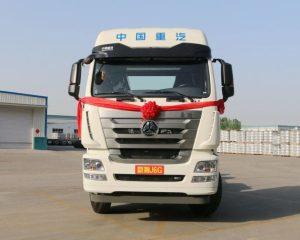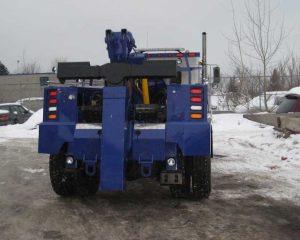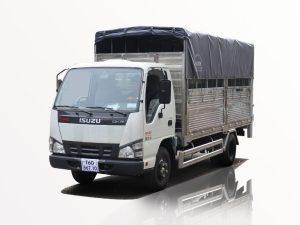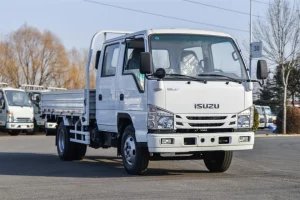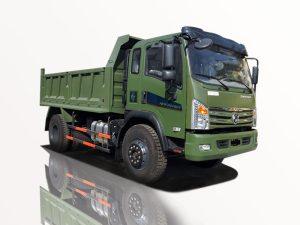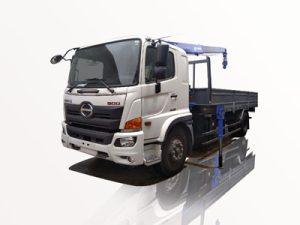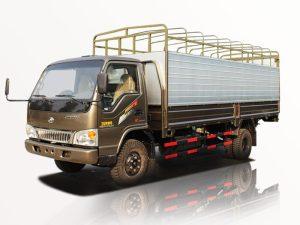Monday to Saturday - 8:00 -17:30
Everything You Need to Know About Airport Firefighter Trucks
Airport firefighter trucks, also known as Aircraft Rescue and Fire Fighting (ARFF) vehicles, are specially designed to respond to aircraft emergencies and fires at airports. These trucks are equipped with advanced firefighting technology and equipment, essential for ensuring passenger safety and protecting airport infrastructure. In this article, we will explore the various aspects of airport firefighter trucks, including their specifications, types, functions, and importance in aviation safety.
Understanding Airport Firefighter Trucks
Airport firefighter trucks play a critical role in emergency response at airports. Unlike standard firefighting vehicles, these trucks have specific features and designs tailored to address the unique challenges presented by aircraft emergencies. From rapid response capabilities to specialized firefighting systems, these vehicles are a vital component of airport safety teams.
History of Airport Firefighting Trucks
The history of airport firefighting trucks dates back to the early 20th century when aviation began to take off. As air travel grew, so did the necessity for specialized fire response teams. Early airport firefighting vehicles were basic, often utilizing modified standard fire trucks. Over the years, technology and design have advanced significantly, leading to the highly specialized ARFF vehicles we see today.
Key Features of Airport Firefighter Trucks
Airport firefighter trucks are engineered with numerous features that make them essential for emergency response.
1. Robust Design
These trucks are built to withstand harsh conditions, including high temperatures and heavy impacts. Their wide stance and reinforced chassis provide stability, especially in rugged environments.
2. High Water Capacity
Typically, airport firefighter trucks carry large amounts of water—often over 3,000 liters—and foam, enabling them to tackle extensive fires quickly.
3. Firefighting Systems
Equipped with advanced firefighting systems, these trucks use a combination of water and firefighting foam to smother flames effectively. The foam creates a blanket over the fuel, reducing the chance of re-ignition.
4. Quick Response Time
Speed is crucial in emergencies. Airport firefighter trucks are designed for rapid deployment, often featuring all-wheel drive systems that allow them to navigate various terrains swiftly.
5. Advanced Technology
Modern ARFF vehicles are equipped with technology such as infrared cameras, onboard GPS, and advanced communication systems to enhance their effectiveness during rescues.
Types of Airport Firefighter Trucks
Airport firefighter trucks come in different types, each designed for specific types of emergencies at airports. Understanding these variations can aid in identifying their capabilities.
1. Large ARFF Vehicles
Large ARFF vehicles are typically designed for major airports and can respond to large-scale emergencies. They are usually equipped with high-capacity water tanks and larger firefighting systems.
2. Medium ARFF Vehicles
Medium-sized ARFF vehicles are versatile and often employed at regional airports. They provide a balance between capacity and maneuverability, making them suitable for various situations.
3. Small ARFF Vehicles
Small ARFF vehicles are agile and designed for quick maneuvering in tight spaces, such as smaller airports and helipads. They often have a lower water capacity but retain high response speeds.
The Role of Airport Firefighters
Airport firefighters are highly trained professionals responsible for responding to emergencies involving aircraft. Their role extends beyond just firefighting; they are also involved in preventive measures and safety inspections.
Emergency Response
Airport firefighters train rigorously to respond to different types of emergencies, including aircraft crashes, fuel spill fires, and emergency landings. Their training includes both physical challenges and techniques for managing high-stress situations.
Preventive Measures
Part of their responsibilities includes performing routine safety inspections on firefighting equipment and conducting training drills to keep their skills sharp.
Firefighting Techniques Used by Airport Firefighters
Effective firefighting techniques are essential for minimizing damage and saving lives. Here are some commonly used methods.
1. Direct Attack
The direct attack method involves firefighters approaching the fire and applying water or foam directly at the flames. This method is effective in most aircraft fire situations.
2. Indirect Attack
The indirect attack strategy focuses on cooling the surroundings of the fire, reducing heat and preventing the spread of flames. This technique is often employed in high-risk fuel fires.
3. Use of Suppressants
Airport firefighters frequently use Class B firefighting foam, specifically designed for flammable liquids. These suppressants smother flames and create a barrier to prevent re-ignition.
Importance of Airport Firefighter Trucks in Aviation Safety
Airport firefighter trucks are vital for maintaining safety in air travel. Here are key reasons why they are integral to aviation safety.
1. Rapid Response to Emergencies
With response times crucial during an emergency, the design and capabilities of airport firefighter trucks allow for quick arrival at the incident site. Their presence can mean the difference between a contained incident and a full-blown disaster.
2. Protection of Lives
Every second counts in emergencies. Airport firefighters, using their specialized trucks, provide life-saving interventions that protect passengers and crew alike.
3. Minimizing Damage to Aircraft
Quick and effective firefighting methods help limit damage to aircraft, reducing repair costs and minimizing financial impact on airlines and airport operators.
Innovations in Airport Firefighting Technology
Technological advances are transforming the landscape of airport firefighting. Innovations ensure that airport firefighters have the best tools available to tackle emergencies effectively.
1. Drones in Firefighting
Drones are increasingly being used in airport firefighting to provide aerial surveillance and assess fire situations before humans engage, increasing safety and effectiveness.
2. Smart Sensors
Smart sensors installed in airport firefighter trucks can monitor conditions in real-time, providing vital data such as temperature, fuel levels, and operational status of firefighting systems.
3. Training Simulators
Virtual reality (VR) and augmented reality (AR) simulators allow firefighters to conduct risk-free training scenarios, preparing them for various emergency situations they might encounter in real life.
Practical Tips for Choosing an Airport Firefighter Truck
When selecting an airport firefighter truck, there are several factors to consider. Here are practical tips to guide your choice:
1. Match Capacity to Airport Size
Choose a truck that matches the volume and type of air traffic your airport handles. Larger airports require trucks with greater water capacity and more sophisticated systems.
2. Consider Terrain and Environment
Evaluate the terrain of your airport location. If the airport sits in a rugged area, ensure the chosen truck has off-road capabilities.
3. Look for Advanced Technology
Select a truck equipped with the latest firefighting technologies. These advancements can enhance response efficiency and safety during emergencies.
4. Assess Maintenance and Service Options
Ensure that the manufacturer provides reliable maintenance plans to keep the truck in optimal working condition.
FAQ Section
1. How often are airport firefighter trucks tested?
Airport firefighter trucks undergo routine inspections and testing to ensure they are operational. These checks are usually conducted monthly or quarterly, depending on the airport’s protocols.
2. What type of training do airport firefighters receive?
Airport firefighters receive extensive training in firefighting techniques, emergency medical response, aircraft rescue operations, and safety protocols, often involving both classroom education and hands-on training.
3. Are airport firefighters also trained as EMTs?
Many airport firefighters receive training as emergency medical technicians (EMTs) or paramedics. This additional training prepares them to assist with medical emergencies during aircraft incidents.
4. What is the average lifespan of an airport firefighter truck?
The average lifespan of an airport firefighter truck can range from 10 to 20 years, depending on usage, maintenance, and technological advancements.
5. How do weather conditions affect airport firefighting operations?
Weather conditions can significantly affect operations. Heavy snow, rain, or fog may reduce visibility and complicate response times. Firefighting crews must adapt tactics based on the current weather conditions.
6. What is the role of firefighting foam in airport emergencies?
Firefighting foam is crucial in suppressing flammable liquid fires. It forms a barrier over the fuel, smothering flames and preventing re-ignition, thereby saving lives and minimizing property damage.


